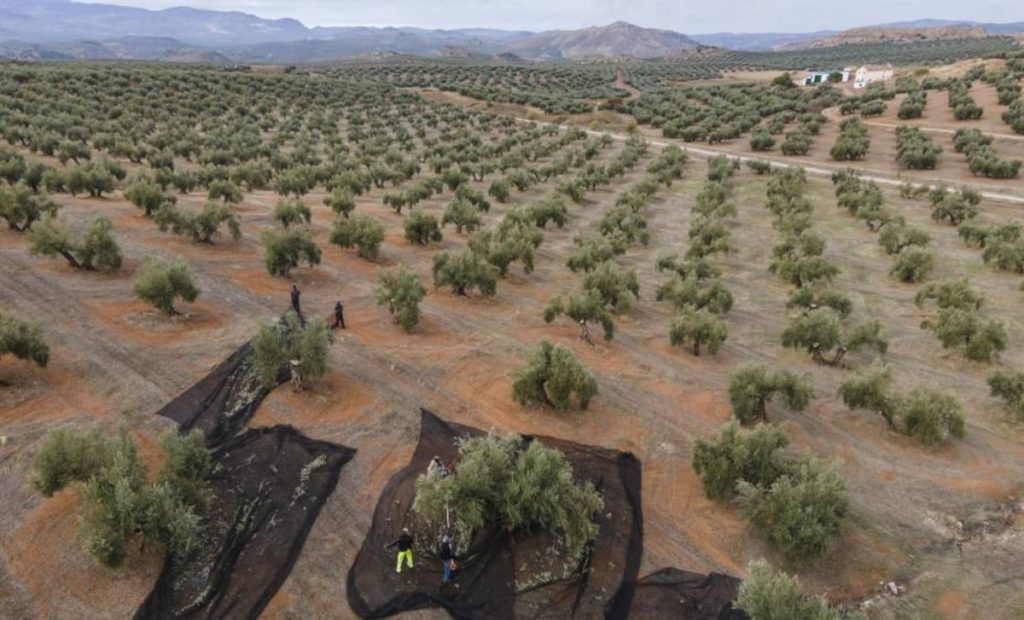The origin prices of olive oil are currently 130% higher than they were two years ago, according to the latest data from the Ministry of Agriculture, Fisheries and Food. Despite recent rains and the forecast of production recovery, the existing tons for the current season suggest that the product will continue to become more expensive in the coming months. Farmers attribute this situation to the heat waves of the past two years, with temperatures over 35 degrees in spring that prevented the olives from having a cold period to bloom and produce fruits for new crops. This led to a production decrease of half the tonnage and an unprecedented price increase both locally and in the international market.
From January 2021 to May of this year, the price of olive oil has increased by almost 199% in Spain, according to the National Institute of Statistics; in other words, it has tripled. In Europe, its value has also continued to rise over the past three years, with annual variations exceeding 50% more than once. The original forecast from the Minister of Agriculture, Luis Planas, for this new season was that the rains would increase the crops and lead to a reduction in prices. The weather has improved, giving farmers a break, but predictions point to a fair production that will not allow for stockpiling. Although the different types of olive oil have moderated their increase in prices in this season, starting from a year where prices had already risen more than 30%.
Analysts believe that consumers will have to wait a few more months before noticing any relief. The largest company in the sector, Deoleo, with brands like Carbonell or Berolli, insists that prices will not relax until at least September. The company’s CEO, Ignacio Silva, has stated that while it is logical for the volume to return to more normal levels this year, the weather is unpredictable and everything could change by autumn, which is when the olive harvest takes place. The future seems uncertain, and everything will depend on how the following months leading up to the harvest evolve. In anticipation of this hoped-for balance, the temporary reduction of VAT to 0% on olive oil scheduled for July seems to be the best solution.
The Ministry of Finance has also defended this measure as a way to protect and incentivize consumption. The long-term plan is to permanently apply a reduced rate of 4% on olive oil once the crisis measures are concluded. Some economists doubt the viability of this due to the effort it will require from public finances. However, there are expectations that prices will moderate in the second half of the year, both in general inflation and specifically in the case of olive oil. The focus is on reducing public deficit levels below 3% of GDP. The analysts at BBVA Research agree with this analysis, noting that the scenario is very different from a year ago due to improved harvest levels.
The European Commission estimates that the EU’s total olive oil production will reach 1.49 million tons in the current season, a 7% increase compared to the previous season. However, this figure is 28% below the last five-year average, and stored products have been reduced by half, reflecting the low yields of the past two years. Spain, which produces about half of the world’s olive oil, with the province of Jaén as a leader, has seen its production reduced as a result of droughts and increased agricultural production means. Due to Spain’s role as a major global producer, fluctuations in supply can significantly impact the market price, potentially leading to a decrease in demand. Recent data from the International Olive Council (COI) from June show that refined olive oil prices are 32.5% higher than the previous season.
The latest trends in food consumption in Spain already show a decline in the purchase of extra virgin olive oil, indicating that for many households, buying this product has become a luxury. The industry anticipates significant price fluctuations and potential declines in demand in the olive oil market. The current situation raises concerns about the long-term sustainability of olive oil production and its availability to consumers. Subscribe to receive more updates on Economy and Business news.


